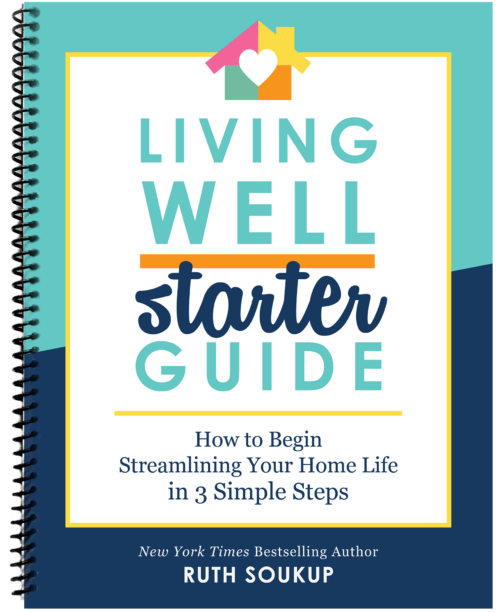Want to know the secrets to saving more money on food? (Spoiler–It’s not always using coupons!) We’ll share how to cut your grocery bill in half.
Let’s face it–food is expensive. The average family spends just over 10% of their household income buying groceries–over $6,000 a year–and even while average wages have gone down, the price of food keeps going up. When you are just trying to feed your family, that is a pretty scary prospect.
That said, as more and more people are beginning to realize, coupons can be a great way to save money on food. If you’ve ever watched TLC’s Extreme Couponing, you probably already know that sometimes those savings can be quite dramatic. The problem is that those dramatic savings often come from seasoned coupon users who have spent countless hours clipping & sorting coupons and searching for the very best deals.
Quite frankly, who has time for that?

A few weeks ago I was asked by the nice people at WINK News to share some tips for saving on groceries. They tagged along as I prepared for one of my own shopping trips, and then as I shopped with Kristen, a single mom of 4 who had never used coupons before and was looking for some practical ways to cut her food budget in half.
For Kristen and probably every other average mom (or dad) who is just trying to save some money on groceries, the idea of all that time and energy on a single shopping trip was not only overwhelming, it was unrealistic. However, as I explained to Kristen, it IS possible to cut your grocery bill in half without spending all your time clipping coupons. In fact, even if you never clip a single coupon, you can still save significant money on your grocery bill just by changing the way that you shop.

Like anything in life, you have to find the right balance. That balance won’t be exactly the same for everyone, but there are 5 tips I shared with both Kristen and WINK that everyone should know:
1. It’s not about the coupons
I’m going to let you in on a little secret that the producers of TLC’s Extreme Couponing (and every food company and grocery store chain out there) don’t really want you to know: Extreme grocery savings do NOT, for the most part, come from the coupons. The bulk of your savings will come from the store sales. The better the promotion, the bigger the savings, so the FIRST step in saving money on your grocery bill is to SHOP THE SALES.
Always, always, always buy food when it is on sale or at its rock bottom price. And by this I mean really on sale, as in 30-50% off the regular price, not one of those “Surprising Low Price” items. (The surprise is that it’s not really on sale!) Compare the store sale ads in your area to find out which stores have the best sale prices, and keep an ongoing price list so that you KNOW when something is a good price.
This does NOT mean that you should buy food just because it is on sale, but instead be on the lookout for sale prices on the food your family normally buys, whether it be all whole foods, organic, or gluten free. Almost everything goes on sale eventually.
Don’t assume you know which store has the best deals until you’ve actually checked–you may be surprised at what you find. Here in Florida, for example, many people assume Publix is the “expensive” store, but when you compare sale ads you will find that Publix consistently has the best sales week after week. Many people also automatically assume that Walmart has the best prices, but most sale prices at a traditional grocery store will beat Walmart’s “everyday low price.” While it has not yet come to my area, I have also heard amazing things about Aldi, so if you are lucky enough to have one in your area, definitely take the time to check it out and compare prices. Because in the end, it is all about the price you pay.
Thus, your goal from now on is to only EVER buy an item when it is at its lowest price. Period.
2. Stockpile, stockpile, stockpile
In order to only ever buy an item at its lowest price, you must buy enough of it while it is on sale to last until it goes on sale again. This is key. Most items go on sale every 6-8 weeks, which means you need to buy enough to last your family that long. If you buy only a weeks worth, you will be forced to pay more the next time you need it because you didn’t buy enough.
Let me make it more clear with an example. Say your family eats 2 boxes of Honey Nut Cheerios every week. The regular price for Honey Nut Cheerios is $4.50 a box, but when you go to the store this week, you see it is on sale for only $1.99 a box–more than 50% off the regular price! Instead of buying only 2 boxes like you normally would for your weekly shopping trip, you buy 12 boxes–enough to last your family for the next 6 weeks at less than half the price you would normally pay.
At first it may seem counterintuitive to be buying more than you normally would instead of less. However, because you are shopping the sales each week, you will be buying a larger quantity of a smaller variety of items, which means your overall grocery bill will still go down. The goal is to build up your own mini-grocery store in your pantry which you can then use to plan your family’s meals.
Remember that a well-varied stockpile does NOT have to take up a whole room of your house, and you do NOT need to accumulate a whole year’s worth of food. Sale cycles generally run about 6-8 weeks, which means your stockpile should contain about 6-8 weeks worth of a nice variety of food. It also means that it will take about 6-8 weeks before you’ve built up a nice varied stockpile and will start to see the most dramatic savings in your grocery bill.
Furthermore, stockpiling does not mean your family has to only eat a diet of processed food. There are plenty of healthy options for stockpiling, including beans, rice, whole grain pastas, whole grain cereals, frozen vegetables, cheese & other dairy products, canned tomatoes, & more.
3. Eat less meat
Going vegetarian just a couple times a week could save you as much as $1,000 a year. Meat costs usually account for a significant portion of people’s grocery bills, so cutting out even a little will make a big difference over time. One of the ways my own family has kept our grocery bill to around $200-300 a month is by eating very little meat and honestly I am shocked at the prices whenever I do buy meat!
I have personally been a vegetarian for almost twenty years, which makes it a little easier for me to come up with creative meat-free meals. However, since the rest of my family is NOT vegetarian, I do make an effort to cook meatless meals that even my meat-loving husband and kids can enjoy.
Here are some of our favorite family-friendly meat-free recipes:
- Loaded Cream of Potato Soup
- Skinny Shepherd’s Pie
- Butternut Squash Lasagna
- Roasted Veggie Cupcakes
- Easy Eggplant Parmesan
- Fresh Lemon & Sage Veggie Pasta
- 30 Minute Black Bean & Corn Chili
- Best Ever Homemade Mac & Cheese
- Quick & Easy Taco Casserole
- Creamy Dill Vegetable Soup
- Quick & Easy Vegetable Quiche
- Easy Broccoli Cheese Soup
- Easy White Bean Chili
- Easy American Goulash
- One Pot Pasta With Feta
- “Meaty” Vegetarian Lasagna
- Easy Vegetarian Meatloaf
- Black Beans & Coconut Rice
I realize that not everyone wants to become a vegetarian, so when you do buy your chicken, beef, or pork, remember to stick to the principles above–buy only what is on sale, and stock up if it is a great deal. Be sure to also check out these ideas for more great ways to save on meat.
4. Change the way you meal plan
If you normally wing it when it comes to meal planning, running to the store several times a week for last-minute dinner items, this step won’t be as painful as you might think. Instead of running to the store for your dinner supplies you’ll be able to run to your stockpile–a ready-made grocery store right in your own home. You may even find that maintaining a nice, varied stockpile by shopping the sales once a week saves you a whole lot of time, in addition to saving you from the expensive impulse and last-minute buys.
For those of you who normally plan your meals then make your shopping list based on that plan, this adjustment may be a little harder. However, you can still make it work if you get into the habit of planning your meals around what’s on sale and around what items you already have on hand in your stockpile. By minimizing the number of non-sale items you need to buy each week you will find that you can plan your meals in advance and still cut your grocery bill in half.
One great meal-planning resource that I have been really impressed with E-Meals. For as little as $5 a month you can receive a customized weekly meal plan based on your own store’s weekly sale ad. The simple recipes are delicious and family friendly, and although the service isn’t free, it does take a lot of the stress out of trying to plan meals around what’s on sale. They even have a great new app that allows you to get your shopping list, meal plan, & recipes right on your phone or tablet. You can also try it for FREE for two weeks!
5. Learn to match coupons to store sales
It is not by accident that using coupons is the last item on this list and not the first. Coupons can and do save you a ton of money on your grocery bill, but only if you follow these other steps first. When and if you make these changes in the way you shop–getting into the habit of shopping for only what’s on sale, buying enough to last your family 6-8 weeks, eating less meat, and planning your meals around your stockpile and what’s on sale–you will see a dramatic drop in your grocery bill, even without clipping a single coupon.
When you begin to match coupons to the things that are already on sale you will see savings that are even more dramatic–50 to 60% off your grocery bill or more! Doing this consistently, week after week, you can literally cut your grocery bill in half.
Learning to match coupons to store sales is not nearly as confusing or intimidating as it might sound. Two years ago I wrote a very easy-to-follow 8 week series called The Beginner’s Guide to Coupons that has since taught thousands of people how to do it, from the very first step of just getting started to making your first shopping list to building a stockpile. It breaks down the whole process into manageable “baby steps,” complete with assignments to get you going, and it is completely free.
One of the most common complaints I hear about coupons is that they are all for unhealthy processed food. While this is to some degree true, there ARE coupons available for healthier food options too. There are almost always coupons available for things like yogurt, cheese, soy or almond milk, frozen vegetables, oatmeal, coffee & tea, gluten-free foods, cereal, and basic pantry staples such as pasta, canned tomatoes, and rice. There are also plenty of coupons available for non-food items such as shampoo, toilet paper, paper towels, cleaning supplies, and over-the-counter medicine.
The important thing to remember is that coupons come last, not first. Don’t buy something just because you have a coupon–manufacturer’s count on that! Wait for the sale, then use the coupon. Changing old patterns and shopping habits is never easy, but with these simple changes you really can cut your grocery bill in half.
Just think of what you could do with an extra $75 a week!
You may also love:
- 15 Things to Buy at ALDI (& Five to Avoid)
- 15 Things to Buy at Trader Joe’s (and 5 to Avoid)
- 10 Essential Pantry Staples to Always Keep on Hand
If you love this resource, be sure to check out our digital library of helpful tools and resources for cleaning faster, taking control of your budget, organizing your schedule, and getting food on the table easier than ever before.

Click here to get full access to our End of an Era Final Chance Bundle now!
Pin for Later:
TAKE BACK CONTROL OF YOUR HOME LIFE
 Ever feel like you just can't keep up? Our Living Well Starter Guide will show you how to start streamlining your life in just 3 simple steps. It's a game changer--get it free for a limited time!
Ever feel like you just can't keep up? Our Living Well Starter Guide will show you how to start streamlining your life in just 3 simple steps. It's a game changer--get it free for a limited time!













I shop at Publix, stocking up on BOGO’s with coupons, we don’t eat much processed food, just some items. I’ve changed my laundry detergent to what’s on sale with coupons also. Also I shop at Aldi and find many great deals on the “other brands” and they also will at times have regular brands. Produce selection at Aldi is very fresh and a lot cheaper, I do try to support the local fruit stands when I can also. I’m thinking of finding a co op in my area for food savings also.
Thanks for your article!
I do all of these things to reduce our family’s food bill but I still do not see how you can eat a balanced healthy diet on $200/month. Stocking up on packaged and canned foods is only going to cost you more on health care bills later. We are a family of four, vegetarian/vegan, do not buy packaged foods, and grow as much of our own food as we can. We buy in bulk, stock pile on sales, use coupons, and u-pick from local farms but our food bill (including toiletries) is around $1000/month.
Do you have low cost recipes or a meal plan that we could see so I can see where I’m going wrong? Many of our friends are wondering why their food bills are so high as well so we’re eager to hear more of your secrets!
Many thanks,
Joey
I have no relationship to this blog. This is my first time reading. But I just did a little math on some of her suggested vegetarian recipes and if that’s what she’s cooking, you can’t get the materials for that for $200 a month, not in my area, anyway. My family of 2 spends about $320 a month on groceries and we do all the things she suggests here except stock up on meat (we’re vegetarian) or buy processed foods like cereals. Also we eat about 70% organic, so maybe that inflates our budget. Fresh veggies and fruit are expensive but important for your health. Rather than obsessing about each penny spent on food I would save MUCH more money by going carless or at least carpayment-less, living in a smaller house, buying 2nd hand everything from toys to books to clothes. Just my 2 cents.
Leandra, you have hit the nail on the head, at least for me and hubby ( mid seventies) living on a very low income. We too decided that being debt free, older car, home that we are striving to improve but own free and clear.We have peace of mind, live frugally, I bake all our bread, serve small meat portions, provide other sources of protein and healthy food. I’m still wondering how people can raise families these days. It’s sad to see grocery carts filled with processed foods, convenience foods etc. We live in a small town which fortunately has a salvage store where I often find healthy items with lengthy expiration dates and that’s what helps me ” stock pile some”.
Wonderful article not much new information for me but still very possible. Yes coupons help some but sale ads are the way to go. As a registered nurse vegetarian and mother of 6 I want my family to eat healthy at any cost. It was when the cost was 400$ a week that I reevaluated our budget. With my aid of my stockpile I spend about 125-130$ a week tops at local grocery stores. I then spend $50-60 a week at Aldis on milk and produce which is about 4 bunches of bananas strawberries watermelon, bag of apples, three things of broccoli, cauliflower, carrots, zucchini, and potatoes. A gallon of 2% milk 1.59$ which is usually buy 5 a week versus our local gas station at $4.99 a gallon. It is possible to save now I work part-time two nights a week because we are saving on our groceries which has also eliminated our childcare bill. Be open minded and try if you really do want to save money.
Thanks for the tips, except I don’t agree with the emphasis on eating whatever packaged foods you can get on sale. The way I see it, I can pay the farmer or I can pay the hospital, so I’m not going to buy Cheerios, regardless of how cheap they make them. When meats and vegetables I can freeze (or are already frozen) go on sale, I totally stock up, but I find that really only the packaged foods have huge margins that can be cut in half, if you’re buying whole foods, there isn’t a lot of wiggle room.
These tips only work if you don’t have a budget that you have to stick to. I am a single mother with a very strict budget for groceries; I can’t afford to “stockpile” something just because it’s on sale. Coupons don’t really work because I rarely find coupons for things I actually want and need. Does any one have any useful tips for making a strict budget go further?
Hi Joelle, I find that bulk stores where you don’t have to buy huge sizes of things are really great for budgeting (like the Bulk Barn), you can get staples like beans, rice, spices, nuts & even ‘treats’, and you only need to buy the exact amount you want/need. Especially the herbs and spices, they are a fraction of the grocery store prices. After that, make your meal plan based on the best food you can get for the best price and don’t get sucked in to buying things you wouldn’t buy just because they are on sale (ie, if you don’t eat Pop Tarts, don’t buy them just because they are a dollar).
One thing I did several yrs ago was to think like WIC. What foods do they give you on that program? Start listing them on a paper. Those are your cheap ways to get that particular nutrient. You could get lots of milk or a little cheese…milk is the cheaper way to get your protein and calcium at cost per serving (1oz cheese=1cup milk for 100% of protein and 66% of calcium). They gave out beans and tunafish, not meat. They even pay for fresh produce now…but not potatoes as there’s not alot of nutrient value in those (and becuz we all eat tons of those already lol). You can get hot cereals on WIC too but I don’t recommend any of the cold cereals. Only get the unsweetened hot cereals too. You can buy 100% wholegrain bread only; don’t waste your precious food dollars on refined grains. I think the juice allowance is bad but at least they make you get 100% juice, no sugar added juices. I would recommend whole fruits over juice. WAY too easy to drink juices, juices, juices. Hard to eat the amount of oranges you would drink in just 2 glasses of oj. I think it would be something like 8 oranges (for 2 NORMAL glasses) and you get no fiber so you’re not filled even. Besides the amount of sugar you’re eating, “natural” or not. Juice is nature’s pop at our house, very rare and limited diluted amounts.
So that was a good start for me to think “on the cheap”.
Joelle it seems like stockpiling costs more, but if you do it correctly, it does not. For example, my family uses a lot if peanut butter. Skippy is currently buy one get one free at my store. So $3.59 for 2 jars. I also have a coupon for $1 off each jar. I am getting 2 jars for $1.59. So to buy 4 jars would actually cost less than the 2 I would have bought anyway. This is when you stockpile. Another example is when whole grain pasta was but one get one free. 2 boxes cost $1.79. I had a coupon for $1 off 2 boxes. So the total for 2 boxes was $.79. 4 boxes cost less than 2 boxes would have. Stockpiling correctly should not cost a lot more, and sometimes even less, than you are currently paying. Non food items are the same way. Quilted northern toilet paper, which my family loves, was buy one get one free and I had a $1 each pack coupon. I got 24 double rolls for less than $8 with tax. That is less than I would have paid for half of that if I only bought at regular price. These are just examples of how stockpiling saves money. Hope this helps 🙂
It is hard to get started for sure. You could save maybe by meal planing if you don’t already.
Cook meals like..home made soup, cook dry beans more often. Hamburger stew is a real money saver.
I am also a single mom of 4 kids who eat like grown-ups and it is possible to stockpile and save. Have a soup night. Cut just $5 and buy dried beans and rice to start. Then a little bit more the next week. It’s harder to see the ways to cut when you’re already bare bones but you can do it!
I’m surprised you haven’t mentioned swinging by your grocer’s clearance section. The varieties are endless, but you can get good deals from meat to mascara…and use coupons on top of that. Maybe not for beginners because you can get carried away and be tempted to purchase things you don’t really need but it’s helped me. Thanks for your tips!